Good Drawing for Building Plans
Many different types of cartoon can be used during the procedure of designing and constructing buildings. Some of the more than commonly-used types of drawing are listed beneath, with links to articles providing farther information.
Run across too: Video overview of different types of drawings.
And: Types of projection.
[edit] Equally-congenital drawings and record drawings
On building projects, it is mutual for changes to be fabricated during structure because of circumstances that emerge on site. Every bit a effect, it is common for as-built drawings to be prepared, either during the construction procedure or when construction is complete, to reflect what has actually been built.
The contractor will generally mark up changes to the 'last construction issue' drawings on-site using red ink, and these can then be used by the consultant team to create record drawings showing the completed project.
For more data see: As-built drawings and record drawings.
[edit] Assembly drawings
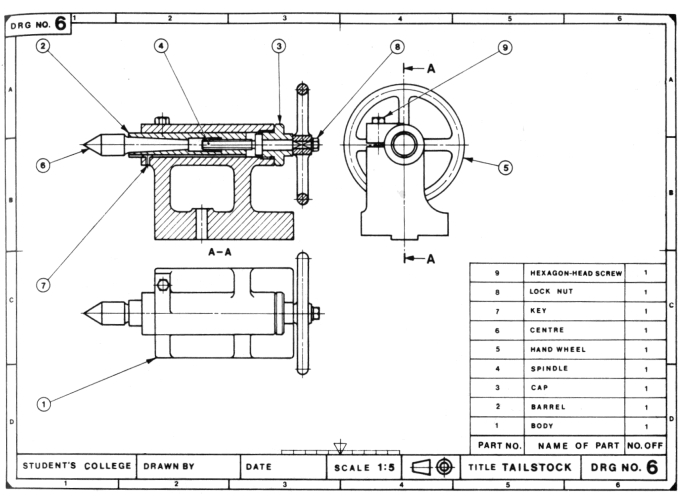
Associates drawings can be used to correspond items that consist of more than than one component. They evidence how the components fit together and may include, orthogonal plans, sections and elevations, or three-dimensional views, showing the assembled components, or an exploded view showing the relationship between the components and how they fit together.
For more data run into: Associates drawing and Exploded view.
[edit] Block plan
Block plans unremarkably prove the siting of a project in relation to Ordnance Survey Maps. Conventions are used to depict boundaries, roads and other details. Depending on the size of the project, recommended scales are:
- one : 2500
- i : 1250
- 1 : 500
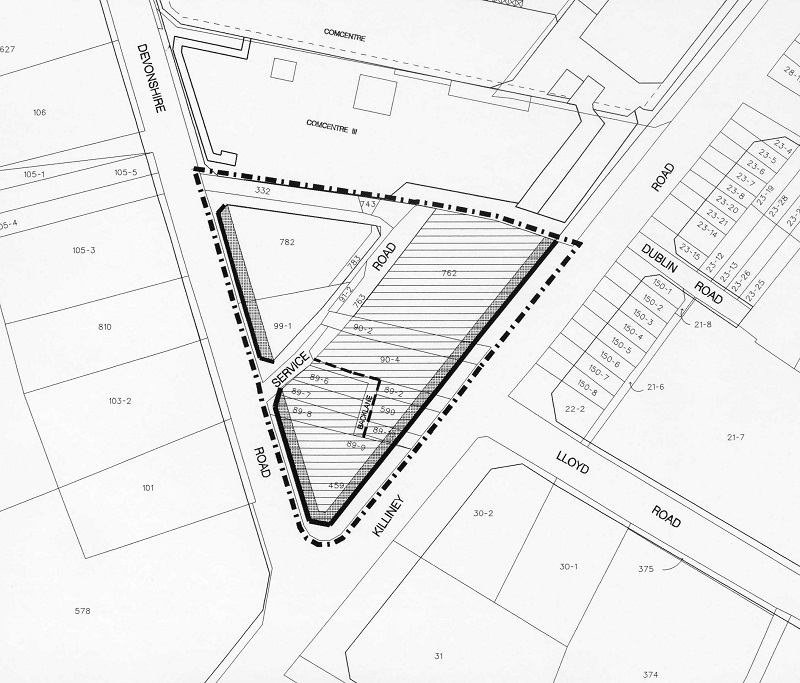
For more information, run into Block plan.
[edit] Component drawings
Mostly, components are 'self-independent' and sourced from a single supplier, typically the complete unit provided past that supplier rather than its constituent parts. Component drawings provide detailed information about the individual units. They may exist fatigued at large scales such as; ane:x, 1:five, 1:2, 1:1, then on. They may include data such as component dimensions, construction, tolerances, and and so on.
For more than information see: Component drawing.
[edit] Concept drawings/sketches
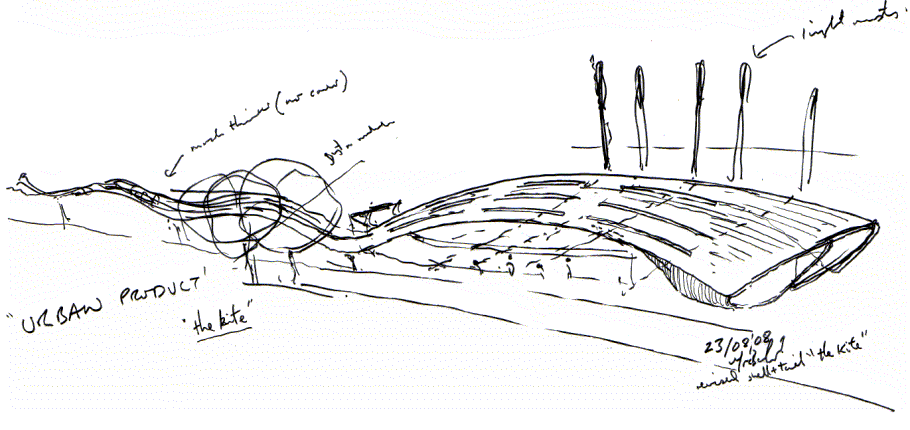
Concept drawings or sketches are drawings, often freehand, that are used as a quick and simple way of exploring initial ideas for designs. They are non intended to exist accurate or definitive, just a manner of investigating and communicating design principles and artful concepts.
For more than data see: Concept drawing.
[edit] Construction drawings/working drawings
Working drawings or construction drawings provide dimensioned, graphical information that can exist used; by a contractor to construct the works, or by suppliers to fabricate components of the works or to assemble or install components. Along with specifications and bills of quantities or schedules of work, they form a office of the 'production information', that is prepared past designers and passed to the construction team to enable a project to be constructed.
For more information see: Construction drawing and working cartoon
[edit] Design drawings
Design drawings are used to develop and communicate ideas near a developing design. In the early stages they might merely demonstrate to the client the power of a particular design squad to undertake the design. They may then exist used to develop and communicate the brief, investigate potential sites and assess options, develop the canonical idea into a coherent and co-ordinated design, and so on.
For more information run across: Pattern drawings.
[edit] Particular drawings
Detail drawings provide a detailed description of the geometric grade of a office of an object such as a building, bridge, tunnel, machine, institute, so on. They tend to exist big-calibration drawings that show in particular parts that may be included in less detail on general arrangement drawings.
For more information see: Particular cartoon.
[edit] Electrical cartoon
An electrical cartoon, besides known equally a wiring diagram, is a type of technical drawing that provides visual representation and data relating to an electrical system or circuit. They are used to convey the engineering design to the electricians or other workers who will apply them to help install the electric system.
For more information, see Electrical cartoon.
[edit] Elevations
The term 'height' refers to an orthographic projection of the exterior (or sometimes the interior) faces of a building, that is a two-dimensional drawing of the building's façades. As buildings are rarely simple rectangular shapes in plan, an elevation cartoon is a showtime angle projection that shows all parts of the edifice as seen from a detail direction with the perspective flattened. Generally, elevations are produced for four directional views, for instance, n, south, due east, west.
For more information see: Elevations.
[edit] Floor plans
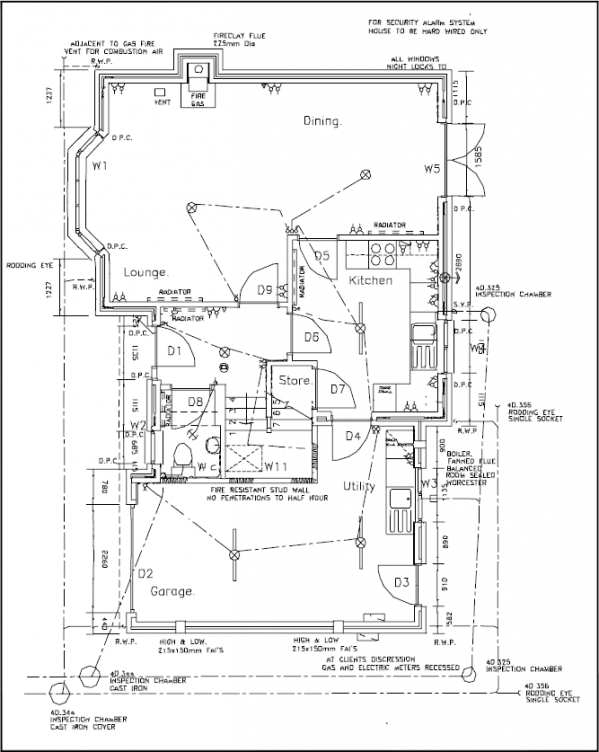
Floor plans are a course of orthographic projection that can be used to show the layout of rooms inside buildings, every bit seen from above. They may be prepared as part of the design process, or to provide instructions for construction, frequently associated with other drawings, schedules, and specifications.
For more than information come across: Floor plan.
[edit] Engineering drawing
An engineering drawing is a blazon of technical drawing used to define the requirements for engineering products or components. Typically, the purpose of an applied science drawing is to clearly and accurately capture all geometric features of a product or component so that a manufacturer or engineer can produce the required detail.
For more information see: Technology drawing.
[edit] Location drawings/general arrangement drawings
General system drawings (GA'due south, sometimes referred to as location drawings) nowadays the overall composition of an object such as a building. Depending on the complexity of the building, this is likely to require a number of different projections, such as plans, sections and elevations, and may exist spread across several dissimilar drawings.
For more than information come across: Full general organisation drawing.
[edit] Installation drawings
Installation drawings present the information needed past trades to install function of the works. This may be particularly important for complex installations such every bit establish rooms, data centres, ventilation systems, underfloor heating, so on.
For more information meet: Installation drawing.
[edit] Location plan
A location program is a supporting document that may be required by a planning authority equally part of a planning application. A location programme provides an illustration of the proposed development in its surrounding context.
For more information, see Location plan.
[edit] Perspective
Perspective drawing is a technique for depicting three-dimensional volumes and spatial relationships based on the eye level and vanishing point (or points) of the viewer. It tin give a realistic impression of what a volume or space will look like in reality.
Constructing perspective drawings of buildings is extremely complicated, but has been much simplified recently past the development of computer aided blueprint (CAD), building information modelling (BIM) and other forms of computer generated imagery (CGI).
To find out more than nigh perspective, see: The origins of perspective.
[edit] Production cartoon
Production drawings illustrate how to manufacture a product, providing information almost dimensions, materials, finishes, tools required, methods of assembly so on. They are used as instructional reference documents past workers and their supervisors on the shop floor or product line to manufacture the products required.
For more information see: Production drawing.
[edit] Scale drawing
Scale drawing is a generic term used to draw any cartoon that illustrates items at less than (or more than) their actual size. This is generally necessary where the items is so large or small-scale that it is not useful or convenient to draw it at its actual size.
For more information see: Scale cartoon.
[edit] Section drawings
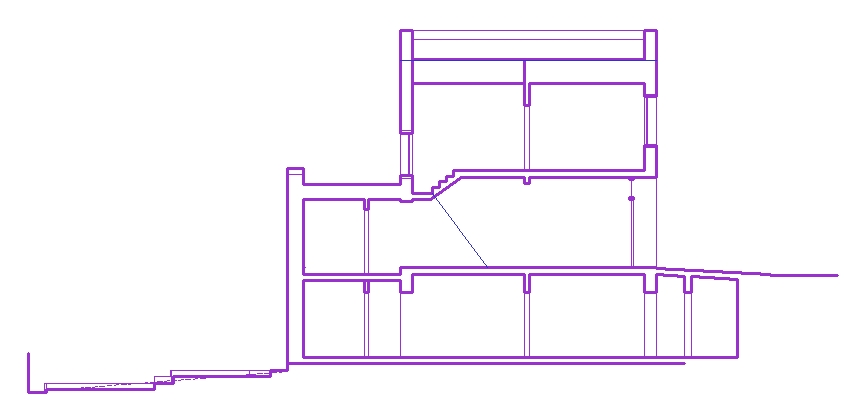
A section drawing shows a view of a structure as though information technology had been sliced in half or cut along another imaginary plane. This can exist useful as information technology gives a view through the spaces and surrounding structures (typically across a vertical plane) that can reveal the relationships betwixt the different parts of the buildings that might non exist apparent on plan drawings.
For more data run across: Department drawings.
[edit] Shop drawings
Shop drawings might be prepared by contractors, subcontractors, suppliers, manufacturers or fabricators. They more often than not chronicle to pre-fabricated components, showing how they should be manufactured or installed. They take design intent drawings and specifications prepared by the projection design team and develop them to testify in detail how the component volition actually exist manufactured, fabricated, assembled or installed.
For more information run across: Shop drawing
[edit] Site plans
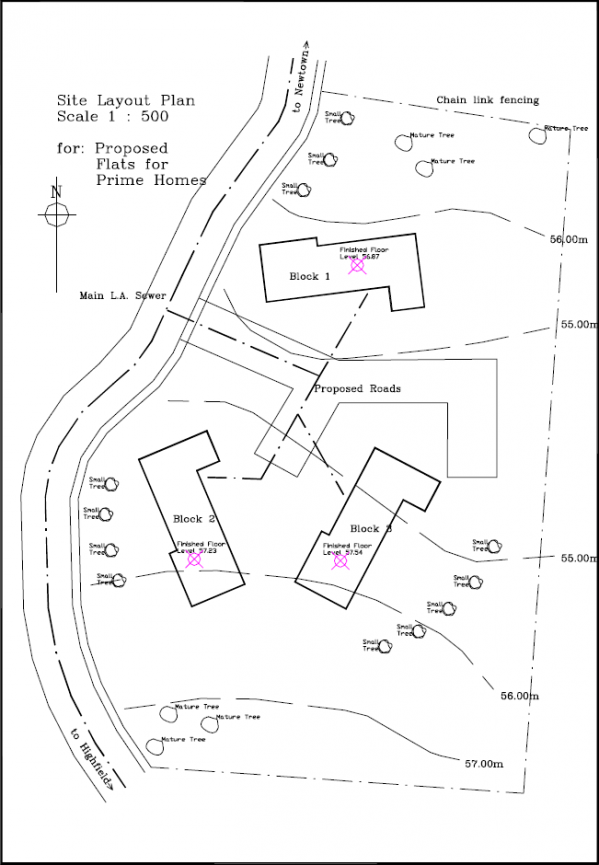
A site programme is a big-scale drawing that shows the full extent of the site for an existing or proposed evolution. Site plans, along with location plans, may be necessary for planning applications. In virtually cases, site plans volition exist drawn upward post-obit a series of desk-bound studies and site investigations.
For more than information run across: Site plan.
[edit] Technical drawings
The term 'technical cartoon' has a very wide meaning, referring to any drawing that conveys the way that something functions or how it is constructed. Technical drawings are intended to convey one specific meaning, as opposed to artistic drawings which are expressive and may exist interpreted in a number of ways. Well-nigh drawings prepared during the design and construction of buildings might be considered to be technical drawings.
For more than information see: Technical drawing.
[edit] Other types of drawing
- Title plan.
- Builders' work details.
- Manufacturers' drawings
[edit] Other meanings
The give-and-take 'drawing' can also refer to: 'Mechanised methods of extracting a cylinder or, more than commonly, a sheet of glass from a cook. Sheets were drawn from tank furnaces using equipment that gripped a layer of glass as it started to solidify.' Ref Archaeological Evidence for Glassworking, Guidelines for Recovering, Analysing and Interpreting Prove, published by Historic England in 2018.
[edit] Related articles on Designing Buildings
- Construction drawing.
- Working drawing.
- Detail drawing.
- Flooring plan.
- Design drawings.
- As-built drawings and record drawings.
- Section cartoon.
- Scale cartoon.
- Site layout plan.
- Symbols on architectural drawings.
- Engineering drawing.
- General arrangement drawing.
- Elevations.
- Technical drawing.
- Product drawing.
- Site plan.
- Shop drawings.
- Title programme.
- Types of project.
- Concept cartoon.
- Component drawing.
- Visualisation.
Source: https://www.designingbuildings.co.uk/wiki/Types_of_drawings_for_building_design
0 Response to "Good Drawing for Building Plans"
Post a Comment